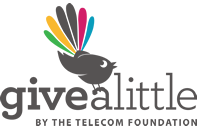This is the full text with references of the material sent to the New Zealand Herald which became the 24 April article titled “Questions mount around the use of puberty blockers for children“. I’ve expanded the words puberty blockers (instead of PB) for easier reading. A few footnotes explain how to find the specific text (in some very large documents) that supports the arguments in the text.
<Starts>
Having last year removed advice that puberty blockers are a safe and reversible medicine, the Ministry of Health has said it will publish an evidence brief on the medicine in May.
A number of overseas reviews are likely to influence this decision. Those in the UK by NICE and Oxford University, Ireland, Finland, Sweden, Norway and Australia, have shown the evidence for using puberty blockers is poor.
The editor-in-chief of the British Medical Journal has written that much of the guidance from medical associations proposes treatments that are not supported by evidence and that the risk of overtreatment is real. Even the NZ Media Council recognises there is a legitimate debate but there has been little media coverage of the issue here.
Other sources show why the “safe and reversible’ claims have had to go.
The Pharmac data sheet for the puberty blocker Goserelin says it must not be used in children. FDA advisory notifications advise of serious health risks. Analysis of academic research has found that, after two years , the drugs resulted in abnormally low bone density, in up to 1/3 of the children. Dr Marci Bowers, president of the World Professional Association for Transgender Health (WPATH), has said that any male child whose puberty is fully suppressed will never orgasm, an important part of human loving, and their penises will not grow to full size
There’s more. Children carefully selected by Dutch clinicians in the early 2000’s for treatment are doing poorly compared with their peers.
It appears that social transition makes puberty blockers more likely but children’s mental health does not improve.
Once a child is taking puberty blockers, cross-sex hormones follow but testosterone frequently causes pelvic pain encouraging hysterectomy and pain from chest binders lead to a greater likelihood of mastectomy. Clinicians and others tell parents their child will commit suicide without treatment. However this is not supported by research and evidence shows it is rare.
New Zealand rates of puberty blockers use are much higher than the UK, Tavistock Clinic’s Gender Service (GIDS) being closed due to unsafe practices. In NZ Dr Sue Bagshaw reports that 65 % of her clinic’s 100 patients receive them The Tavistock GIDS clinic prescribed blockers to about 6 per cent.***
The overall New Zealand rate is higher too. Pharmac data shows New Zealand has had 703 children on puberty blockers compared with about 1000 prescribed them in England over the same 10-year period.
The NZ medical guidelines require no diagnosis. Rather, clinicians are advised they should “recognise that each individual is the expert of their own gender identity’. That is, each child, regardless of their age, and any other mental health issues, is to be treated as the expert. Parents, including one speaking at the 2022 CATA conference, have confirmed this. Treatment is already highly devolved and work is underway to make puberty blockers available from more general practices.
Moreover, the 2022 WPATH standard has removed surgery age limits and the Ministry references these as eligibility criteria. Some surgeries, such as a double mastectomies, have already been performed on NZ children at age sixteen. (Born in the Wrong Body The Listener Jun 26 2021)
Meanwhile, the Ministry of Education Relationship, Sexuality and Education Guidelines present being transgender as an option to all Primary School children, who are encouraged to use their their preferred name and pronouns. Teachers ‘help’ confused or unhappy kids to decide they are transgender. Auckland University researchers **** asked thousands of 8-year-old children which gender they identified with promoting the fantasy sex change is possible. Schools turn to ‘rainbow’ advocacy groups who give extra attention and support to these children. Such interventions give the lie to the claim that noone encourages children to be transgender.
Given what the health system now knows about blockers, having teachers explain gender identities as if they are a neutral and cost-free option seems very unwise.
Jan Rivers
Jan is a former public servant and independent researcher on sex and gender and co-author of Sex Gender and Women’s Rights which was published in 2021 in Policy Quarterly.
Notes
* See page 46 of the Guideline Left hand column para 3
***See page 8 paragraphs 29 and 31 has the data for 2018 Medicated – 161 and 2020 referred 2519 respectively.
**** See page 51 paragraph 3.5.3

Latest Comments